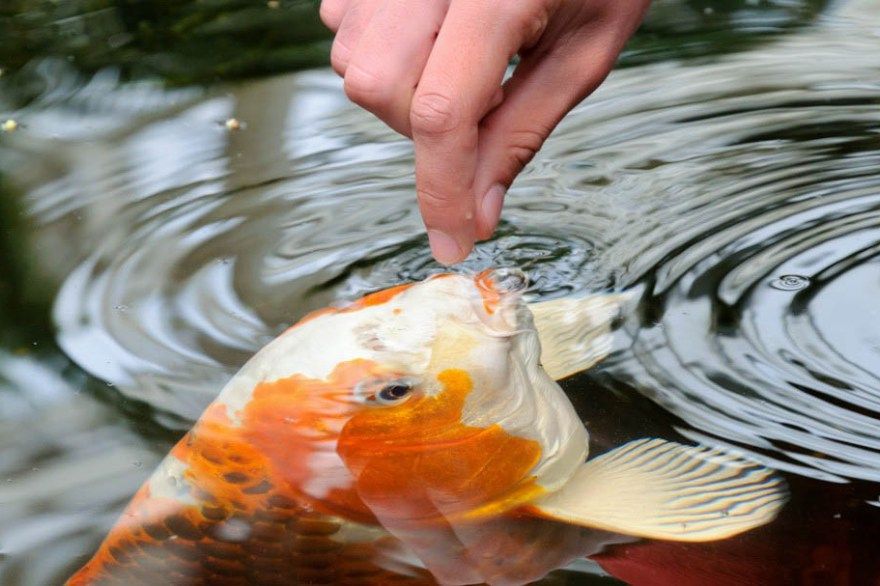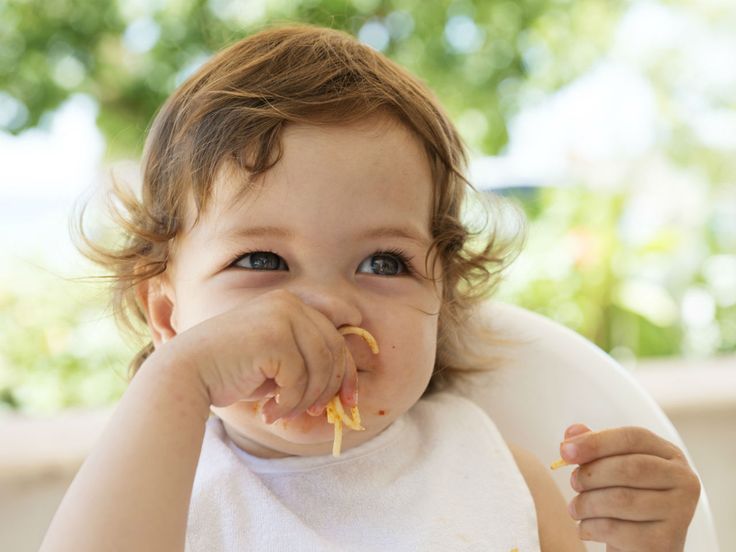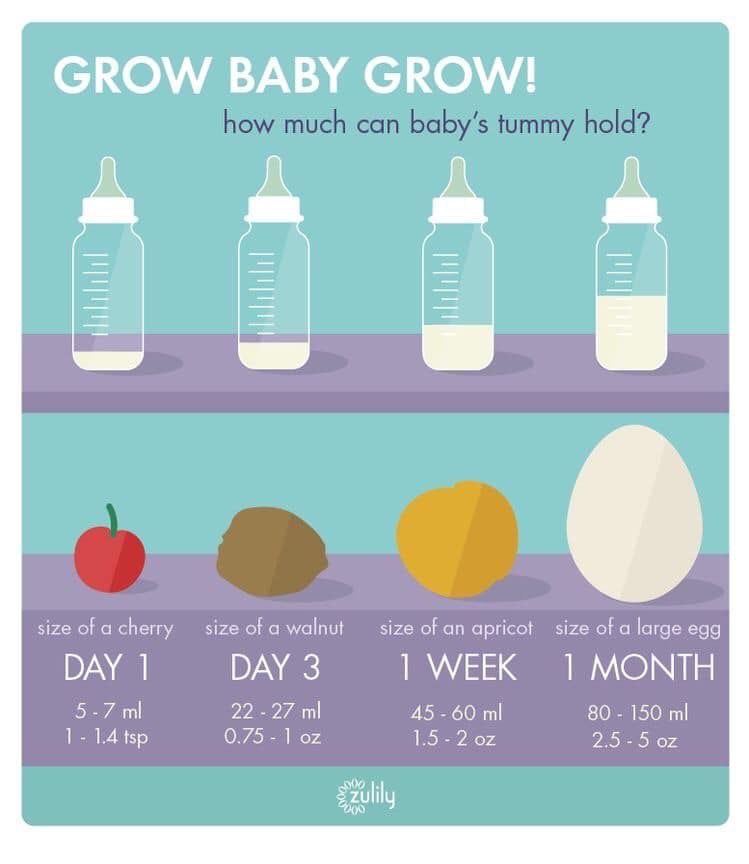How to feed baby goldfish
Baby Goldfish: How to take care of goldfish babies
Caring for goldfish can be very rewarding. You set up their tank, make sure their water is just right , choose what food they eat, and watch your goldfish grow and play.
But there is something even more rewarding than looking after a goldfish you bought from the pet store. How about raising a goldfish all the way from birth to adulthood?
In this guide to baby goldfish, we look at how goldfish babies are born, how they grow, and – most importantly – how you should care for them.
How do goldfish have babies?
Before baby goldfish can be born, two sexually mature adult male and female goldfish must mate.
Goldfish only mate at specific times and under specific conditions. For example, the temperature of the tank is important.
If you’re not sure how to encourage your goldfish to mate, or if they are ready, check out our guide to breeding goldfish to learn more.
Once your goldfish have successfully mated, the female goldfish will lay eggs. Then, the male goldfish will fertilize the eggs.
About 4 days later, the eggs that were successfully fertilized and survive – i.e. don’t get eaten by the adult goldfish or sucked into your filter! – will hatch.
Your goldfish babies have been born!
What do the babies look like?
Once your goldfish eggs hatch, you’ll need to look closely to find the tiny goldfish babies.
For the first 4 days or so they will be stuck to the leaves of your plants, so look carefully. Where you previously just saw eggs, you should now see tiny black baby goldfish with their yolk sacs attached.
After about 3 more days, your goldfish will be able to swim around freely.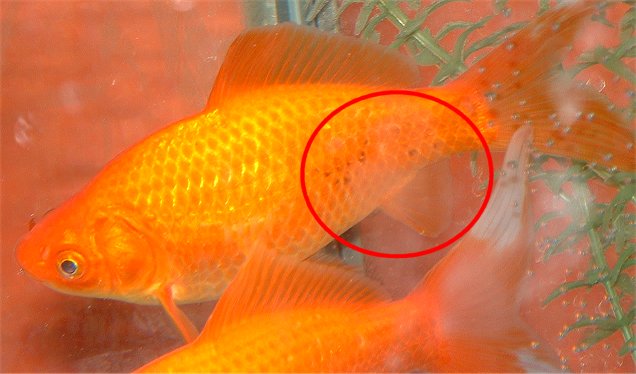
What color are the babies and how does this change?
Newborn baby goldfish start out black.
As they grow, they develop a brown color, perhaps with hints of silver. Some areas of their body are almost see-through.
It can take up to two years for a goldfish to fully develop its color.
And even then, goldfish can continue to change color throughout their lives.
Baby goldfish growth rate
Of course, baby goldfish don’t stay so tiny and black in color for long.
One of the joys of breeding goldfish is that you get to see the babies grow and develop over time.
Once your baby goldfish reach the free-swimming stage, their bodies will be around 5mm long. They will have a very small stubby tail, pectoral fins (on their sides) and a fin on their back too.
Over the next week, your baby goldfish will grow by almost 40%. Their caudal fin (the tail fin) will develop a lot during this stage of growth.
This video shows two-week old goldfish flapping their tail fins in the water.The following week – the third week after hatching – your goldfish will continue to grow quickly. You’ll also notice their dorsal fin (the fin on their back) becoming more defined.
At three weeks old, the dorsal fin is clearly visible from some angles.
By the fourth week, the dorsal fin will be well developed.
By the fifth week, all of your fish’s fins will be well developed and they will have scales.
From week six onward, your fish is essentially “complete”. Like a miniature version of an adult goldfish. From now on, it’s all about growing in size and weight.
Caring for baby goldfish
Tank
To stop your adult fish from eating their own eggs, you should remove your goldfish eggs from your main tank as soon as they have been fertilized by the male.
Removing the eggs could be as simple as transferring your spawning mop, if you used one. Or you may have to gently siphon the eggs off things like plants and decorations.
Place the eggs into a small tank – perhaps 3 to 5 gallons in size – with around six inches of water.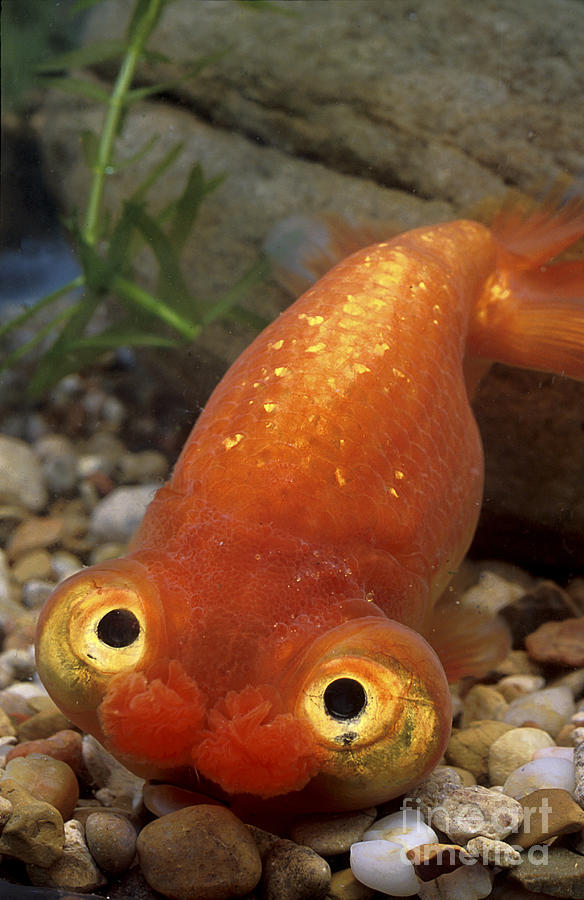
Add a small sponge filter to the tank. Don’t add a large, powerful box filter, as the babies will very likely get sucked inside!
Your baby goldfish should stay in smaller tanks – separate to the adult fish – until they meet two important conditions:
- They are strong enough swimmers to not get sucked into the main tank’s filter
- They are bigger than the adult fish’s mouths!
Only once these conditions are met should you add babies to an adult tank.
Temperature
We recommend maintaining a temperature between 70-75oF (21-24oC) in your baby goldfish tank. This temperature is warm enough to encourage rapid growth, but without being too hot for your fish.
It’s very important to avoid any sudden changes in temperature. A sudden drop to a cold temperature will stress your fish, which could cause them to get sick or even die.
Food
The first few days
For the few first days after hatching, you should not feed your baby goldfish at all.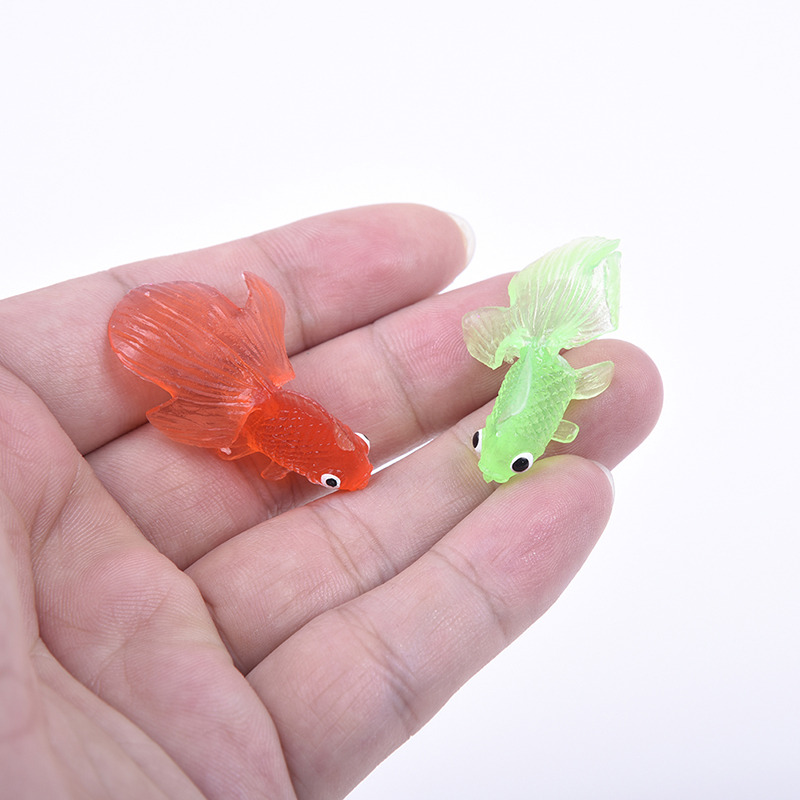
While this might seem odd, it’s because the goldfish arrive well-prepared with their own packed lunchbox!
Baby goldfish hatch with a “yolk sac” attached to their bodies. This pouch contains all the food they need for the first few days.
The first month
Take some hard-boiled egg yolk and soak it in water. Give it a good shake, then add to your baby goldfish tank in small quantities.
You may also wish to try crushed brine shrimp and baby fish food.
Remove any food that is left uneaten so that it doesn’t pollute your tank.
The second month on
Your fish should now be able to eat the same foods you feed to your adult goldfish.
Just be sure to crush up the food if necessary. You need to make sure the pieces aren’t too big for the babies mouths!
Death
We should add that – no matter how well you care for the babies – you should be prepared for lots of them to die.
The reason that goldfish lay so many eggs, and that so many babies hatch, is that only a small percentage make it to adulthood.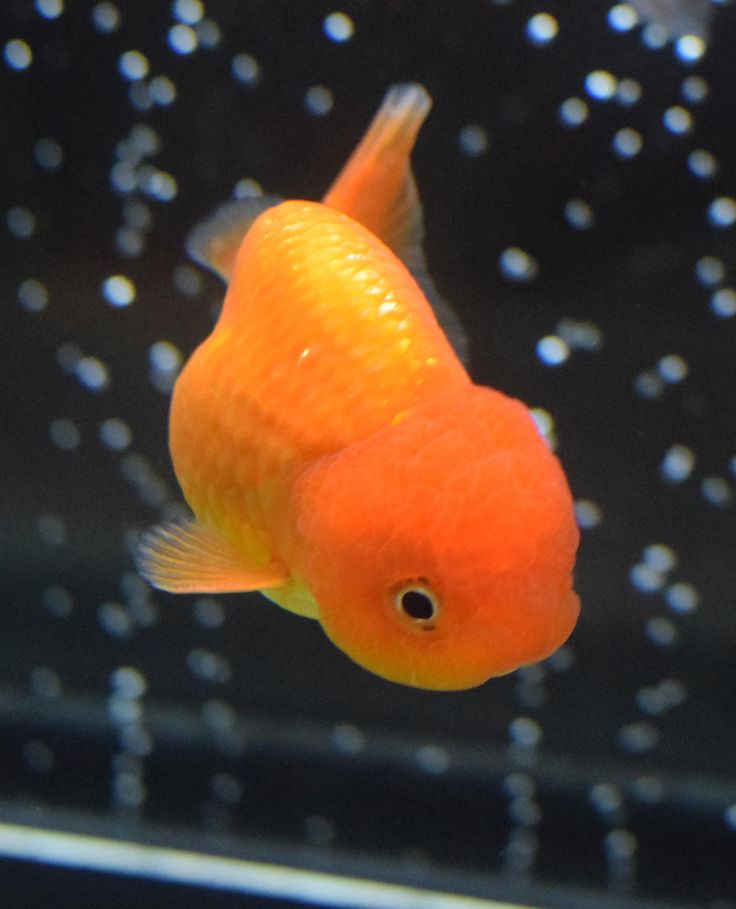 They need to have lots of babies to ensure that some survive.
They need to have lots of babies to ensure that some survive.
If you manage to keep 20% or more of your baby goldfish alive to give away to other people, or to move to your adult tank, you’ve done very well.
What are baby goldfish called?
Throughout this article, we’ve referred to the little new members of your goldfish family as “babies”. However, this isn’t the technical term for baby goldfish.
When they first hatch from their eggs, baby goldfish are called larvae. They carry a yolk sac with them for food. This periods lasts for two to three days.
The baby goldfish then lose their yolk sacs and become capable of feeding themselves. Once they reach this stage, the babies are called Fry.
Once baby goldfish develop scales and have fully formed fins, they are known as juveniles. This phase lasts until the goldfish is a sexually mature adult fish.
Feeding Goldfish Fry
- Home
- Raising Goldfish Fry (babies)
- Feeding Goldfish Fry
Feeding goldfish fry as much food as they need as soon as they need it, but also maintaining excellent water conditions in their aquarium or pond are the most important secrets to raising fry successfully.
Keeping these two important issues in mind let’s look at the most common options for feeding fry during the most important first month stage.
Fry food options depend on the age of the fry.
Goldfish fry with orange bellies from eating Brine Shrimp
Brine Shrimp - First Food
The advantages and disadvantages of brine shrimp have been discussed elsewhere. The biggest advantages are:
- The fry can eat them as soon as they are free swimming
- You can hatch as much or as little as you need
- They are disease free
- They are always available when you need them.
Infusoria – First Food
These are microscopic forms of animal life that live in water. They are usually cultured in 1 quart mason jars or similar.
As soon as the eggs are laid you need to start a culture. You will need many jars of the culture to satisfy an average hatching of 500 to 1000 fry.
The infusoria will satisfy the fry for about two weeks before they need something more substantial.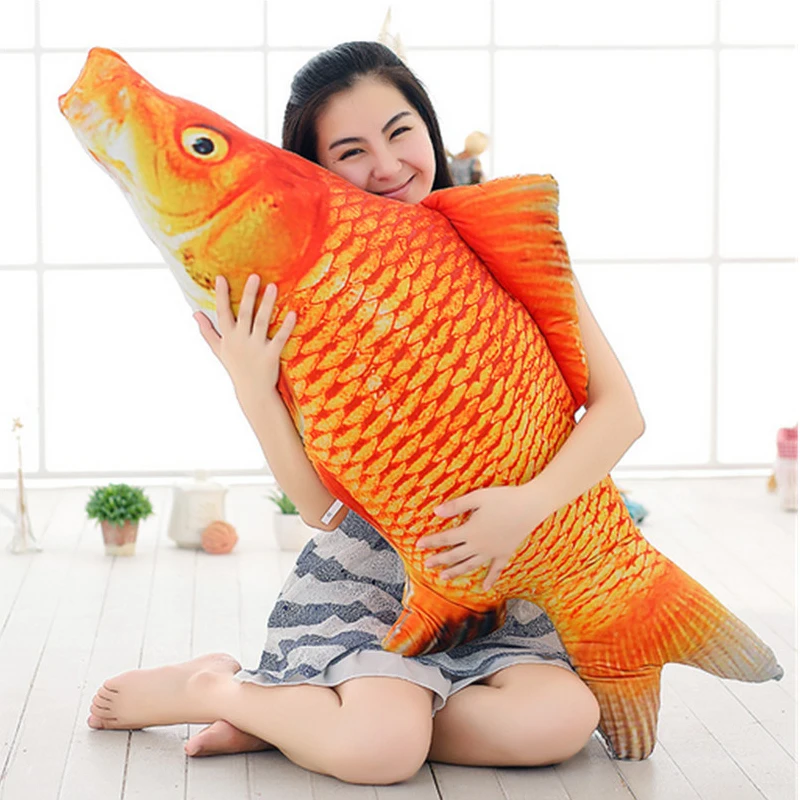
To learn how to grow infusoria click here.
Mosquito Wrigglers – First Week Onwards
Mosquito wrigglers
Mosquito wrigglers are the best food for feeding goldfish fry. Growth speed can be doubled if you can get enough of them, which is a problem in early spring.
The way they are fed to the fry is by placing egg rafts in the fry aquarium. As the wrigglers hatch, they are eaten by the fry.
Fry just free swimming struggle with the wrigglers even though they are tiny. I tend to feed the wrigglers to fry about a week after they become free swimming. The fry have no trouble eating them then. You also avoid the problem of uneaten wrigglers becoming too big for the fry to eat, which occurs within a few hours, and having to remove them from the fry aquarium before they become adults.
To learn how to collect mosquito rafts click here.
Daphnia – Second Week Onwards
Daphnia are a small fresh water crustacean found in still water, sometimes in such quantities that the water appears red.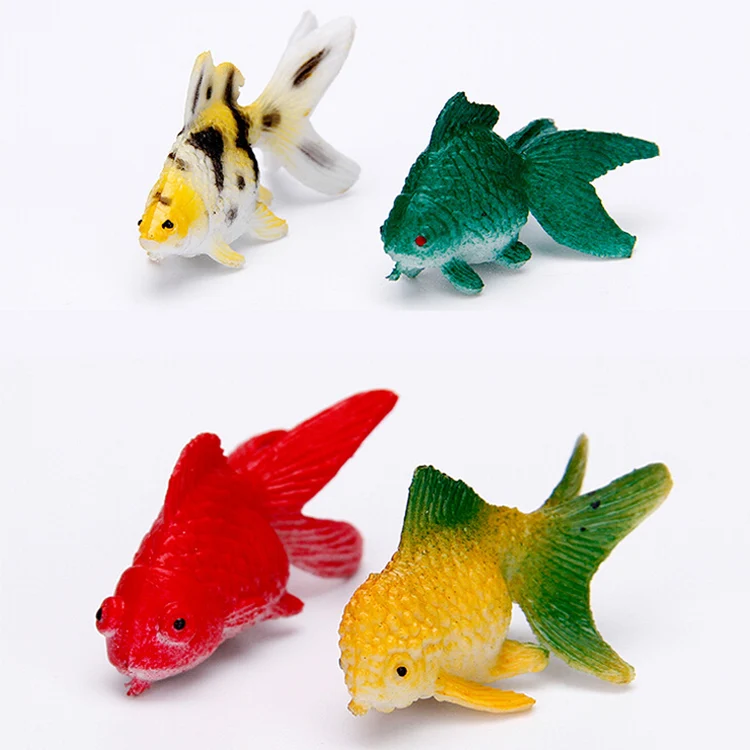
Some species of daphnia can be used as a first food. The adults are put in a fine sieve and the larvae that pass through are fed to the fry.
Daphnia supply can be uncertain, one day the water is teeming with daphnia, the next day they are gone.
Daphnia can introduce enemies of fry such as hydra that kill fry under two weeks old.
Most of us don’t have access to a good supply of daphnia these days but it is well worth considering seeding your own pond in readiness for introducing your two week old fry.
If you can get the timing right, you won’t have to feed your fry for the next two weeks.
To learn how to prepare a daphnia pond click here.
To learn how to feed and maintain a daphnia culture so you have a live food source year round, click here...
Microworms - Second Week Onwards
Microworms are very small white nematodes that look like tiny worms. Sizes range from 1.5 to 3mm. They are not to be confused with white worms that are much larger.
Microworms can be raised in any small container, a plastic takeaway food container with a lid is ideal. The taller ones are best as the worms will crawl out of the shallow trays.
You need to obtain a starter culture from an aquarium shop or other source. Place a thin layer of oatmeal that has been soaked in water in the bottom of a container, and on top of this sprinkle some dried yeast which the nematodes feed on.
Keep the culture covered but punch some small air holes in the lid.
Add the starter culture to the mix and within a week or two depending on temperature, a white film of micro worms will form up the sides of the container. Scrape them off the sides with a knife or small paint brush and stir them into the water so they separate.
Keep them between 68-85 degrees F.
When reproduction of the worms appears to be slowing, make up a fresh culture. The culture usually starts to smell at this stage.
As microworm cultures can smell unpleasant at times, keep them away from living areas.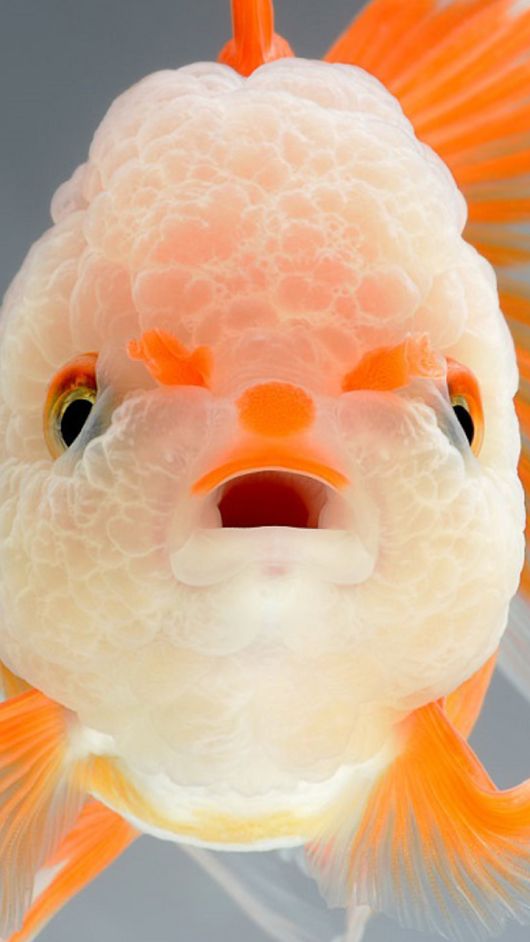
Artificial Foods – First Food
I’ve put artificial foods last because that is where they belong…last.
Using artificial foods exclusively for feeding goldfish fry is seldom satisfactory because:
- The food doesn’t provide all the nutrients necessary
- They quickly pollute the water
- Fancy Goldfish varieties don't develop properly.
If you have had a failure with your brine shrimp or infusoria culture, hard boil an egg, and squeeze the yolk through muslin so it enters the water as a mist.
Most shop bought liquid fry foods are primarily egg yolk anyway so I would avoid them.
Feeding Goldfish Fry Live Food The First Month is Critical
Feeding goldfish fry isn’t hard, but for the first critical month you must be well organized and supply as much food as the fry need on a daily basis, 2-3 times daily for the first few weeks.
Tip:
If a brood is receiving the correct amount of food, the size difference between the smallest and largest fry won't be big enough for the larger fry to start chomping on their smaller siblings.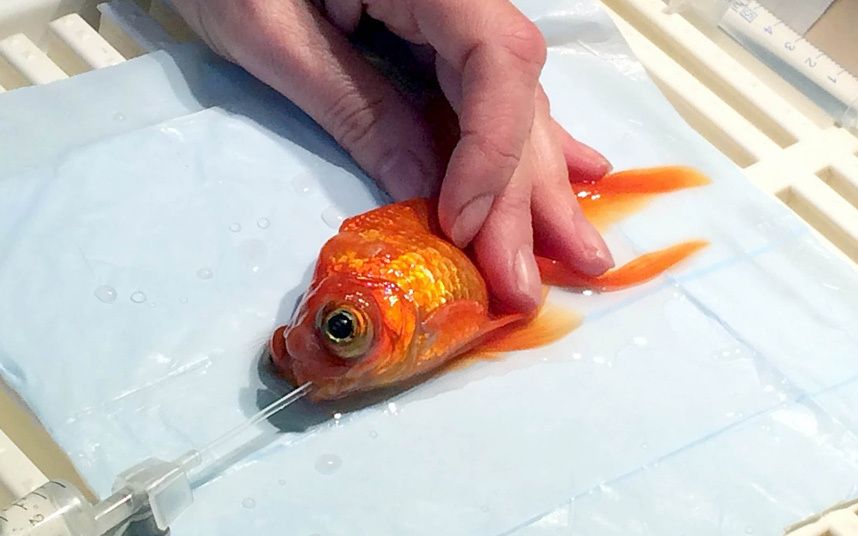
In other words you shouldn't have to separate out the larger specimens.
After the first month, you can start introducing some high quality dry food into their diet, but, dry food is never as good as live food, and the fry growth rate will drop if dry food is fed exclusively.
To raise high quality fish, live food should make up the majority of their diet for the first six months.
Top of Feeding Goldfish Fry page
How and what to feed a goldfish?
Contents of the article
- 1. Why is it important to properly feed a goldfish?
- 2. Food for goldfish
If you think that it is enough to throw a handful of food every day, then you are mistaken. Fish, like people, do not like to eat the same food, they need a balanced and varied diet.
Goldfish eat everything they come across, they are omnivorous, that is, both plant and animal food is suitable for them.
Healthy fish are constantly hungry, this is due to the fact that in natural conditions they always have to be in search of food.
Why is it important to feed your goldfish properly?
Be sure to feed your goldfish three times a day.Fish need to be fed frequently but in small quantities. In order for a goldfish to grow well, it needs a balanced diet. If you feed the fish incorrectly, then it will not live long, moreover, this will negatively affect its growth.
The food should contain vitamins, carbohydrates, fiber, minerals and proteins. Special cereals are best suited for their nutrition. But cereal should be alternated with other foods so that there is no monotony. If a goldfish eats properly, it will be vigorous and healthy.
Goldfish food
There are several types of goldfish food.Flake
Flake food is considered the most suitable food for goldfish. When buying such food, you need to pay attention to the amount of protein - the more it is, the better for the health of the fish. Choose multi-ingredient foods as they are the most nutritious.
When buying such food, you need to pay attention to the amount of protein - the more it is, the better for the health of the fish. Choose multi-ingredient foods as they are the most nutritious.
Balls
Balls are high in protein. Before feeding the fish with such food, it should be soaked in aquarium water for 10 minutes. But you should know that food in balls is not useful for all types of goldfish, some may have poor buoyancy. If this happens, the food in the balls should be discarded immediately.
Please note that some types of food may not be suitable for your fish.Feed your fish at regular intervals to reduce the chance of you overfeeding or underfeeding your pet.
Frozen food
Frozen foods of plant and animal origin are sold in good pet stores. Freezing kills germs and preserves vitamins. The food is defrosted little by little. It should not be re-frozen.
Live food
Every fish is happy to eat live food: daphnia, earthworms and brine shrimp. Live food contains the necessary amount of protein. Such food can be found in quality pet stores.
Live food contains the necessary amount of protein. Such food can be found in quality pet stores.
It's quite interesting to watch how a fish hunts swimming prey. If the color of a goldfish is orange, this indicates that there are enough vitamins in its diet, but when the color fades, it is necessary to change the diet.
Fresh vegetables
Fresh vegetables, such as spinach, peas or carrots, are sometimes useful for fish. Before giving the vegetables to the fish, they are lightly scalded with boiling water, so they turn out softer. But vegetables should not be boiled. Peas need to be cleaned. Instead of vegetables, algae, such as spirulina, are good.
Goldfish eat not only vegetable, but also animal food.Amount of food for goldfish
It is better if one person is feeding the goldfish, but if there are several members of the family, then they should know how much food can be given to the fish. Goldfish always feel hungry, but at the same time they eat only a few pieces of food at a time. This happens because more food is not digested, slags are obtained from it.
Goldfish always feel hungry, but at the same time they eat only a few pieces of food at a time. This happens because more food is not digested, slags are obtained from it.
How often should you feed your fish? It is better to do this 3 times a day. And at one time they give as much food as the fish can eat. There should be no excess food in the aquarium, because the water will become cloudy. The optimal amount of food for goldfish is one pinch between two fingers.
If you find an error, please highlight the text and press Ctrl+Enter .
characteristics, feeding, care and more
El goldfish or also known as goldfish belongs to the family cyprinids , they are considered one of the fish that were used for catching and keeping them as pets during around the world, and today it is one of the most common fish to be found in aquariums.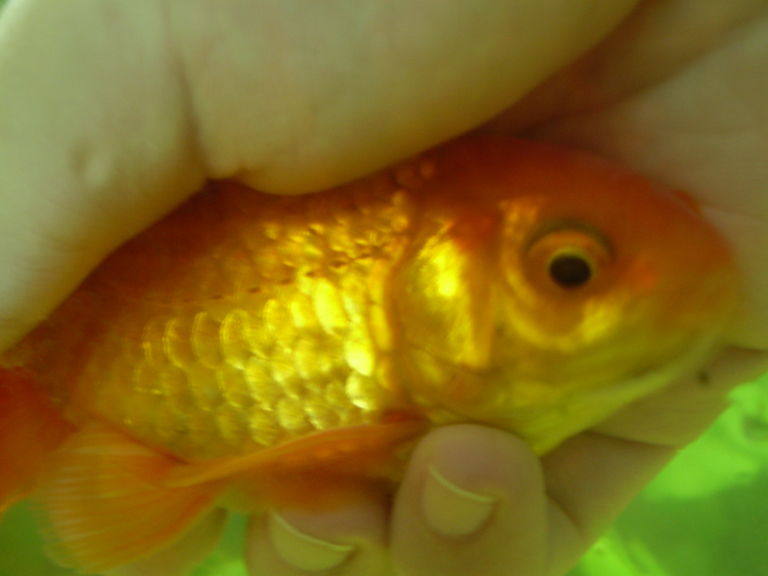 Find out all 9 below0013 goldfish information .
Find out all 9 below0013 goldfish information .
Contents [Ocular]
- 1 story
- 2 Goldfish characteristics
- 3 behavior
- 4 products
- 5 reproduction
- 6 habitat
- 7 Distribution
- 8 kinds of goldfish
- 8.1 golden kite
- 8.2 Shubunkin fish
- 8.3 Ryurkin fish
- 9 Giant River Goldfish
- 9.1 Features
- 9.2 reproduction
- 9.3 Catching this species
- 9.4 Saving
- 10 Care of goldfish in captivity
- 11 Meaning of goldfish
history
El goldfish Mainly a species from China, previously this type of species was used for domestication, at the same time they were grown for human consumption for many years respectively.
In case common goldfish its skin tone is usually yellowish with some flashes of silvery grey, but it had derivative species with a more reddish coloration that came from captive breeding of this species during ancient China.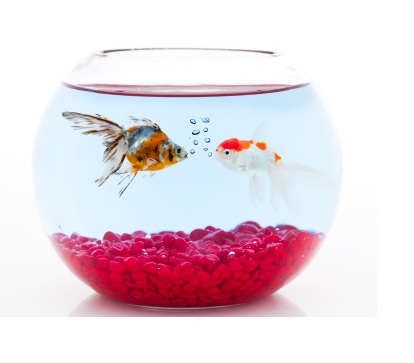
Overbreeding of this species has led to its expansion over the centuries, so there are several species of goldfish in the world and a wide family.
In ancient China, this capture goldfish their breeding in captivity was very common at that time, the creation of aquariums was promoted so that after breeding and during breeding, different types of this fish were created; The most common mutation that was achieved with this type of experiment was that of fish with golden coloration, as many considered them lucky.
Peasants began to breed this type of goldfish more often than the original type, which had its reflections in silver, so over the years many have assumed that the golden color is the main example of this type of species and that gave the name It.
Did you know?
The goldfish represented abundance in the houses where it was grown and gave prestige to those families that had a large number of specimens in the ponds, although over time this type of hierarchy was lost with modernism and the same breeding was used for other purposes according to compared with to his beginnings.
Characteristics of the goldfish
This is a very common fish in aquariums around the world, so it can be talked about a lot. characteristics of goldfish are large species, which can generally reach about 60cm in length, but there are species that can reach 90cm in length; Under natural conditions, they can weigh up to 30 kg, but in captivity
goldfish They have a very long lifespan, as history shows, both in natural conditions and in captivity, the lifespan of goldfish is long, they can last about 15 years depending on the habitat where they develop and care for them. may have, they usually live together in large ponds where you can follow their progress.
Its body is not very elongated, yellow-gold in color with small patches of orange on the tail and fins, it is a very agile fish in terms of swimming and very agile in feeding.
They are very friendly fish and can come into contact with other species, they usually gather in large groups without feeling threatened.
behavior
The goldfish is considered to be a very calm species that can coexist with other species without problems, although it usually groups with fish of the same species when they are in their natural habitat, however, if they are in captivity, they can perfectly get along with other river fish without problems.
They usually form colonies within the species so it is very rare to see goldfish all alone as they are usually always in large groups of up to 7 individuals respectively, they are also considered to be very curious species as they love to explore the nature surrounding them in natural conditions.
products
goldfish It is considered an omnivore, it can eat various plants that inhabit its habitat, in the same way it supplements its diet with other species that make them carnivorous.
If found in captivity, this species has no feeding problems as it can consume the fish food sold on the market.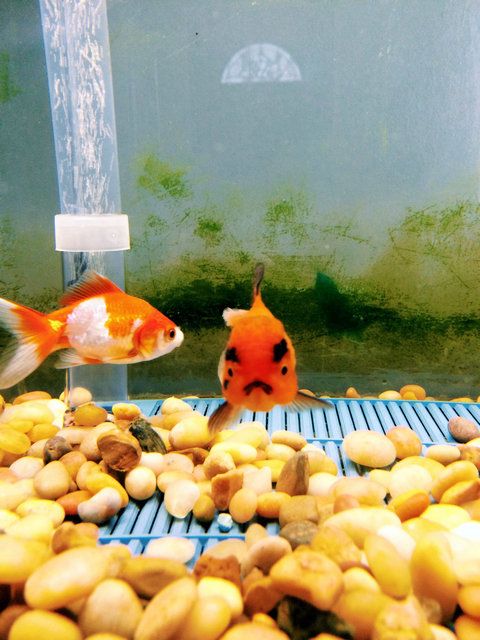
What do goldfish eat?
In its natural habitat it is what goldfish eat It can be expressed in the consumption of larvae, insects, bacteria, seedlings and even eggs of other species, which makes it a predator.
In the same way it is necessary to supplement his diet with living creatures, so larvae can be included in his diet and include some sea fleas or bacteria in the water so that it is consumed by him, it is also permissible to give him lettuce, cauliflower and shrimp ...
At first, the fish may be reluctant to try a new diet out of distrust, but will eventually eat it whole.
We must keep in mind that the consumption of eggs of other species golden carp may occur both in natural habitats and in captivity; as it is also a predator of its offspring, care must be taken regarding feeding and living with other species.
In the video below you can learn how to prepare food for captive goldfish.
Goldfish food
reproduction
Continuing information about goldfish Now it's time to talk about its reproduction. Proper reproduction of goldfish requires that they be surrounded by the best conditions, both natural and artificial, and in turn have the adequate nutrition they need to grow.
It reaches sexual maturity and the optimal moment for reproduction at the age of two years, and this depends only on how long it has reached during this time.
Their reproduction is usually not difficult at all, even if they are in captivity, because they are usually reared in ponds where this process is very well facilitated, under these conditions their sexual maturity occurs with significant changes in temperature, so in general this is a common thing. wait until spring to achieve this type of reproduction.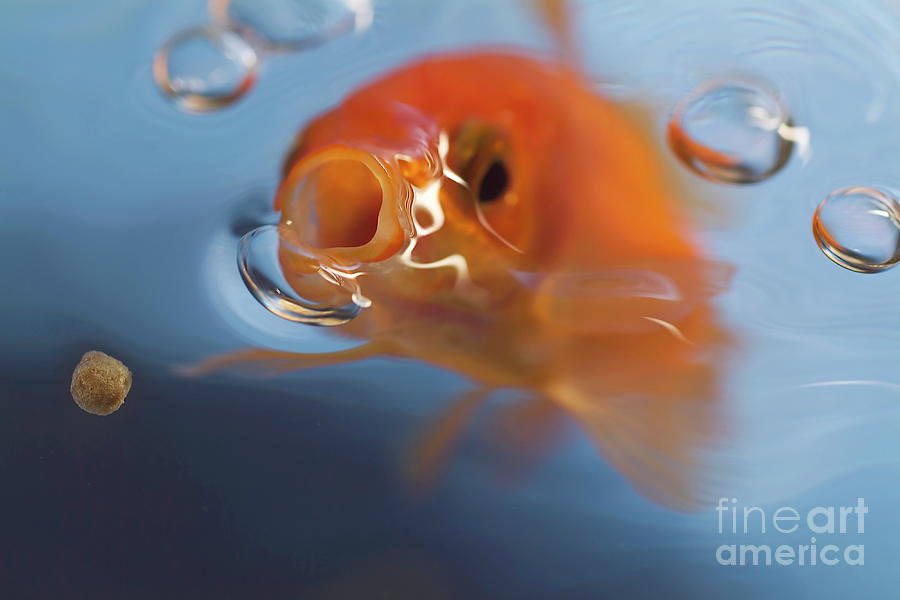
The courtship process in this species is the same whether it occurs in the natural environment or not, in general the male tends to pursue the female until he attracts her attention; As soon as the penetration of the same is achieved, the process of fertilization takes place, when the same male pushes the female several times against the stones or algae that are around him until she can release the eggs without problems.
goldfish like the vast majority of the family to which they belong, it is oviparous, meaning that its eggs are usually laid in vegetation where fertilization has been established, they are yellowish in color and usually adhere to algae for better preservation.
These eggs take at least 3 days to be born, it all depends on the temperature of the water at the time these eggs are born, these young are independent and feed on the bacteria that form in the water until they can fend for themselves.
In general, many offspring take time to adapt to the characteristics.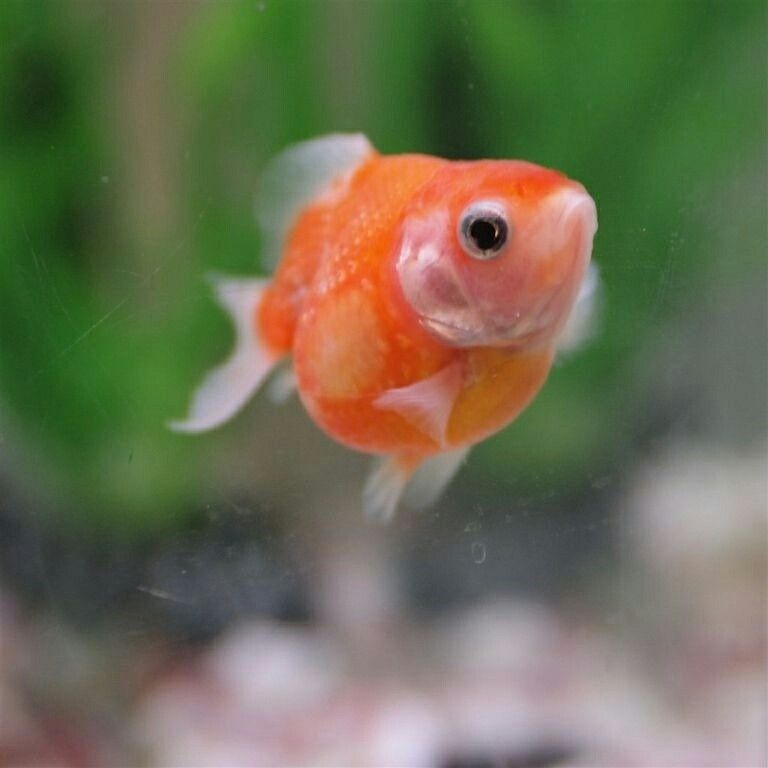 Find out in the video below how to determine the gender of your goldfish.
Find out in the video below how to determine the gender of your goldfish.
Determine the sex of a goldfish
habitat
The habitat of goldfish is freshwater areas, since this species of the species will not be found in the ocean; When it is in captivity, ponds are usually designed to provide the kind of mobility that this fish is used to.
Many of the experts claim that this species of fish does better in captivity than in its natural habitat, although their lifespan and weight are not adequate, and this species is used to living in this way, the only thing this fish retains from its natural environment a habitat. Environment This is the temperature of the water, which must be adequate for it to develop.
distribution
Goldfish is commonly found in Asia, especially in China, where it has been bred for centuries. fish of wisdom because whoever has it in his house strives for abundance both for the person and for the family that owns it.
fish of wisdom because whoever has it in his house strives for abundance both for the person and for the family that owns it.
Today, the export of goldfish to other countries takes place immediately, primarily to areas of Europe and America, where ponds have been adapted for its development.
species of goldfish
It's no secret that this species was bred to achieve different forms, there is a wide variety of mutations due to the intervention of the hand of a person that we still do not know, but which makes them part of the same family. fish. Species recorded so far will be described below.
golden kite
It is characterized by the fact that it belongs to the type of goldfish with a very strong body, its color has orange tones that imitate the gold of the family from which it comes, but with the difference that it contains small red spots that distinguish it from others. rest.
Their behavior is very territorial, they only want to be seen around fish of the same species as they can often act aggressively when threatened by other fish, due to their size they are usually bait for other predators.
Its longevity is extended, as is the common goldfish , this species can live for about 15 years respectively either in the wild or in captivity, reared in ponds, although species have been recorded that have been able to live a little longer.
Shubunkin fish
This family of goldfish is also usually reared mainly in ponds, so they are considered a species that lived only in captivity. Its appearance lies in the fact that, in addition to golden tones, it has a wide range of colors, from red tones to blue and in many cases including green tones.
These are fish that, like the comet, have a strong body and in various cases can reach almost a meter in length.
Its behavior is very calm, typical of common goldfish, it can coexist with other species without reacting aggressively, and is usually found in large groups of fish, whether they belong to the same species or not.
Its lifespan is slightly shorter than other species, as it has been recorded that it managed to live only 8 years even in captivity.
Ryurkin fish
This species of goldfish is one of the best preserved in China, it can be seen that they accompany common goldfish in ponds, since both have a lot of similarity, since the mutation of the same gave good results.
Its skin is very similar to that of the common goldfish, with the difference that this species has a vertical stripe running along the entire half of its body, this stripe is silvery, which distinguishes it very well from the original fish.
This species is very small, reaching only 30 cm in length depending on the water temperature, many times it is usually smaller, and in turn it is a species bred only in captivity, which explains the characteristics it contains.
Its lifespan is only up to 10 years, even when attempts were made to extend this period, it was not possible to reach it, but there are unproven studies indicating that it can live as long as an ordinary goldfish.
Giant river goldfish
This is a type of goldfish that many say was given by mutation of the species over the past centuries, although it has not yet been included in its family, for many scientists it is already part of it, and they say that he was created solely for human consumption, since he was adapted to survive in the necessary conditions before his capture.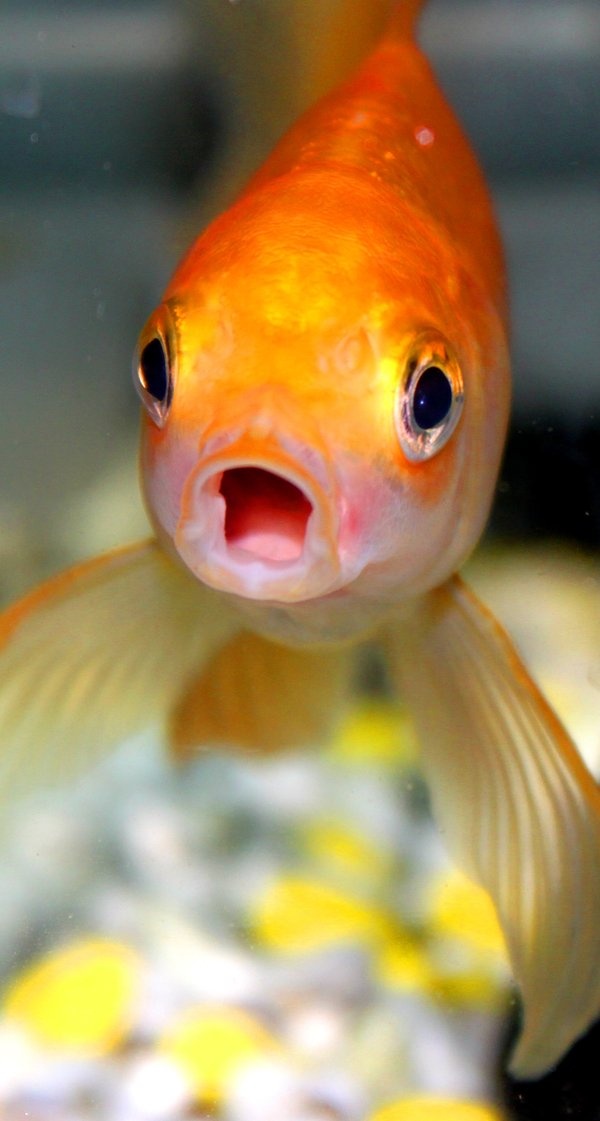
Characteristics
This is a fish with a strong body, slightly flattened on the side. Recorded specimens have an approximate size of 1.10 meters and weigh about 25 kilograms, the head is large, it can reach a quarter of the total body length.
His mouth is also large and can reach the middle of his head, he has large teeth with which he strongly captures prey, his eyes are small and located on the sides of his head.
Despite the large head, the abdomen is elongated. The dorsal fin is located closer to its middle; At the same time, they have a very powerful and strong tail, which makes them excellent and fast swimmers.
Its body is covered with large colored scales that vary from yellow to orange with small silvery flashes respectively, its dorsal side is slightly darker and with green spots, and its belly is completely whitish.
Are goldfish vertebrates or invertebrates?
Some people wonder if goldfish is a vertebrate or an invertebrate , in response to your concern, we can say that it is in the list of vertebrates, which is equipped with articulated jaws, a hydrodynamic fusiform body, fins and a tail suitable for swimming .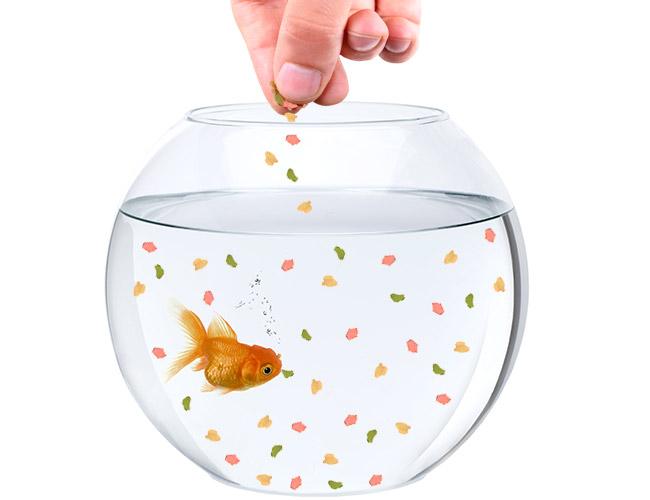
reproduction
The reproduction takes place from October to November. Males tend to each female as they follow each female. Males very often jump out of the water during courtship to show that their female has already won.
Fertilization is external, in one clutch the female can lay up to 200.000 eggs. They usually do not protect their young, which are usually deposited in places with increased current.
The giant goldfish reaches sexual maturity in the second year for males and the third for females; young specimens usually feed on bacteria, crustaceans and insects. They are distinguished by long longevity, during which they can reach 14 years of age.
catching this species
Dorado is looked for in waters with a strong current, where she waits for her prey; the ideal time is from May to August when individuals are at their best size before proceeding to migrate to breed.
Conservation
As this type of goldfish is commonly found in very cold water rivers and develops throughout Europe and South America, a conservation commission has been selected to ensure its conservation and will be responsible for protecting the species from possible future overfishing. over the years.
over the years.
Although this type of exercise still does not pose any threat, several conservation organizations have taken action on this issue, they believe that they cannot wait until the species is in the red in order to be able to act and, like other species in the In world this goldfish may be affected by climate change and human intervention in mining, which is damaging the environment.
Various projects have been proposed today to protect said goldfish, which focus mainly on protecting both the species and the offspring during fertilization, as when interfering with their natural habitat, they find it necessary to deposit their young. in areas where they are at high risk of survival.
Therefore, it is important to take care of this type of problem from the very beginning in order to solve the situation that has arisen.
Not many changes have been made in this regard, but gradually they are looking to change the situation in terms of awareness in these cases, it is required that companies can set an example of perseverance and dedication and at the same time a little commitment to the environment, since this is a problem that concerns society as a whole.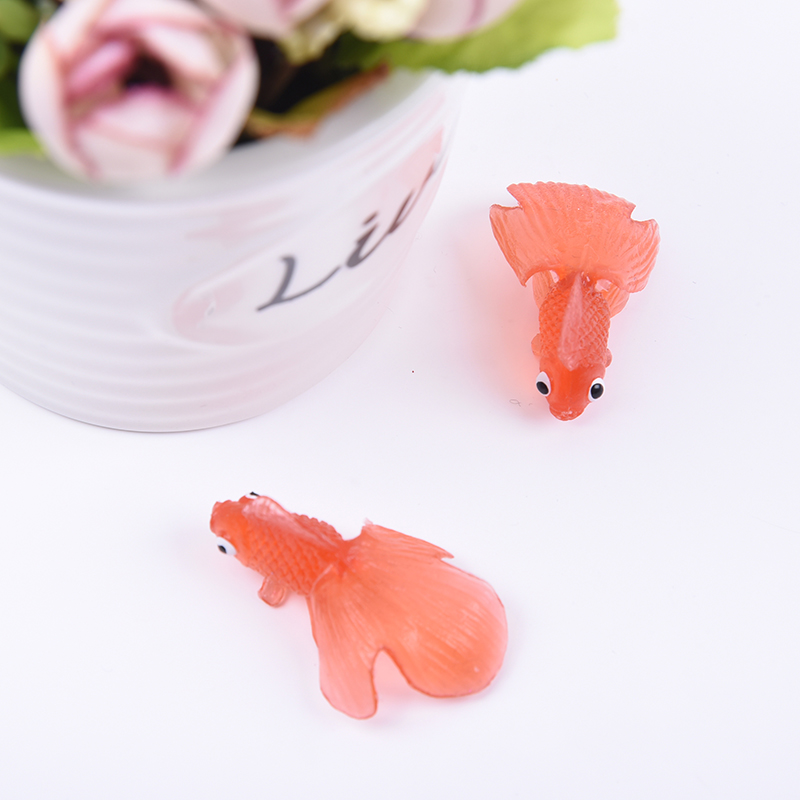
Captive goldfish care
They exist for caring for goldfish that are necessary for their development in captivity, in this sense goldfish have different requirements than tropical fish in terms of set-up, maintenance and care. The following are the optimal conditions for an aquarium that will make it a suitable home for goldfish:
- A large aquarium over 100 liters, decorated with coarse sand and small stones, is advisable. Goldfish are slow swimmers and are often damaged by rocks if they have any sharp points.
- Aquarium landscaping should not prevent the fish from swimming freely and should consist of resistant species with hard leaves, given the tendency of these fish to eat vegetation.
- The ideal temperature should be between 15 and 22 degrees. If these limits are exceeded, the fish can get sick.
- Goldfish are much more fragile than other fish species, given the special care they require: high oxygen levels and a balanced diet that combines both plant and animal nutrients.
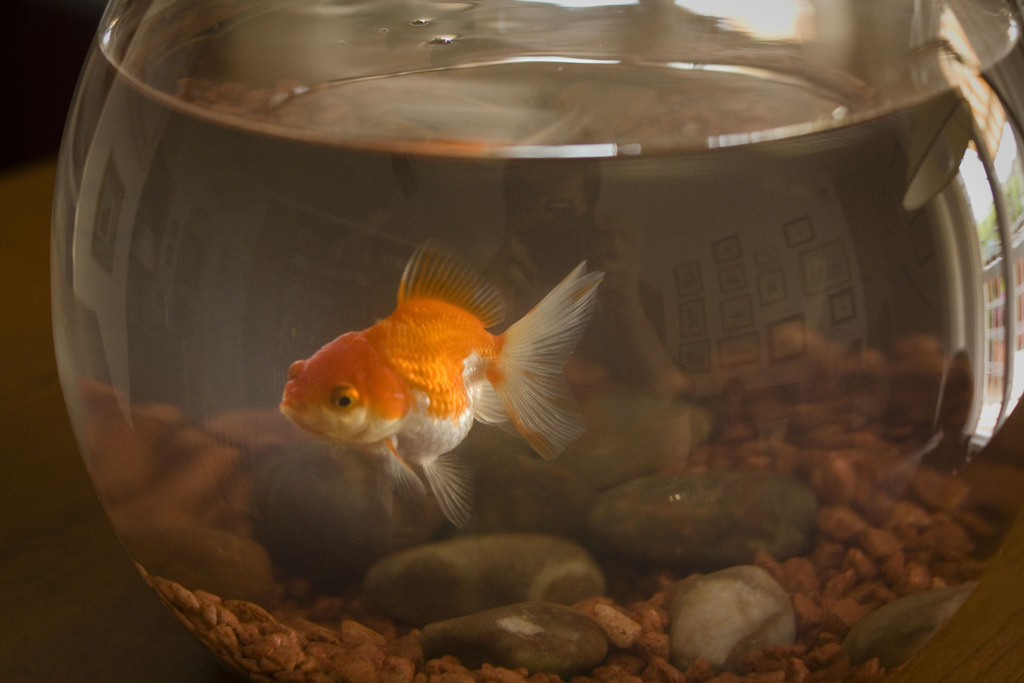
In the video below they are described for goldfish care basic but essential to ensure a good quality of life in an aquarium and at best they can breed and exist for many years as expected of this species .
Goldfish Care
Common Mistakes in Goldfish Care
delicate when kept in captivity.
We have to keep in mind that if we want to have a goldfish as a pet, it is not possible to get a small aquarium or fish tank, because these are fish that are constantly swimming, this will deprive them of the constant movement they are used to.
Another mistake that is commonly made when caring for goldfish is cleaning the aquarium or fish tank, many people often use a variety of cleaning products to accomplish this task, not taking into account that their residues can remain inside, which can cause damage.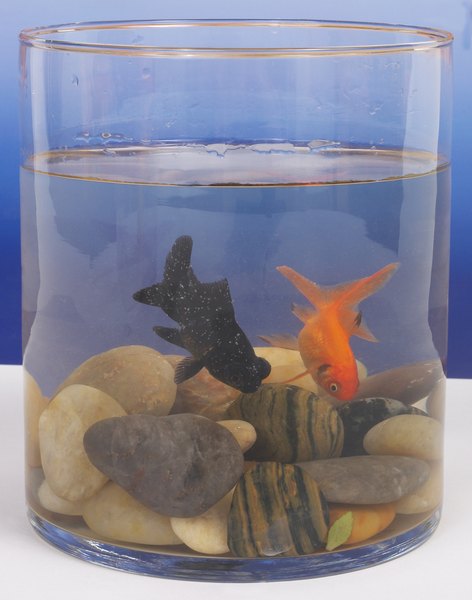 harm. to these fish, causing illness or even death.
harm. to these fish, causing illness or even death.
Any decoration that is intended to be introduced into the environment of said fish must be properly disinfected, because bacteria outside the water are different from those created in it and can lead to immediate contamination of the water.
The aquarium or aquarium population should not be exceeded, although goldfish are considered to be fish that can be perfectly surrounded by other species, overpopulation can lead to a restriction of the mobility of all species, so they can act aggressively among themselves.
Finally, you should constantly watch the mentioned behavior of the goldfish, because any anomaly in it can be a symptom of some problem or disease, so you should be aware of this.
Below is an audiovisual guide to help you identify the most common mistakes made in goldfish care, prevent and avoid them for the benefit of your pet's health and quality of life.
Goldfish maintenance
Significance of the goldfish
The goldfish is of great importance in Buddhism, associated with prosperity and abundance, which in Buddhist culture are essential aspects for progress in life. The goldfish is said to represent both eyes of one of the gods who brings abundance to the home or work wherever it is, bringing only positive things into our life and our future.
One of the most representative legends about this fish says that when the Buddha managed to achieve perfect awakening, 8 auspicious symbols were reflected to him, among which was a goldfish.
The symbol of this fish became so popular in this religion that it was automatically assigned a golden color, symbolizing all the merits that are acquired during spiritual practice, and the victory over all those worldly desires that can be represented in life.
These fish have no limits, they can swim all over the ocean wherever they like, they are very popular in China, where they are very often found in abundance in various ponds throughout the country, it is believed that they contribute to the prosperity of the family. which keeps them and their happiness from any unforeseen events that may arise.
which keeps them and their happiness from any unforeseen events that may arise.
For the people of China, the symbol representing this fish attracts wealth, especially the species of fish mutations that come in different colors will help them always be together in complete harmony and union.
Another of the myths that arise in connection with the existence of these fish indicates that they were created from the tears of a beautiful girl living in a heavenly palace, these tears fall on the earth and into the oceans. For many years, it was customary to constantly deliver various types of goldfish to Buddhists, who set about conserving and breeding them in captivity.
For several centuries, the adherents of this religion have focused on capturing various species of beautiful fish that were not commonly seen near nature, so it is assumed that various corresponding mutations were made with them, so that more than one species was created. goldfish around the world.
Similarly, the total number of species of goldfish is also a symbol of Buddhism, since it has always been considered appropriate to have 8 to 9 species respectively.